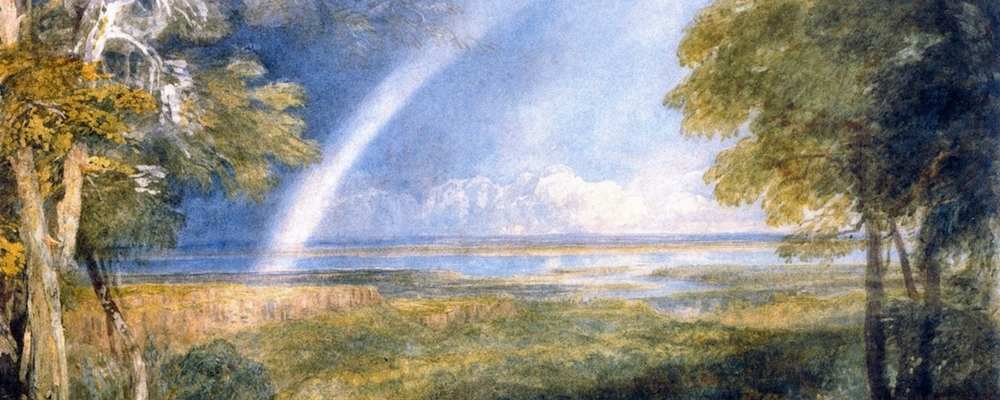To Stem the Tide: Reuniting the Sciences and the Humanities Through Science Fiction
April 5, 2018 | Ann Kowal Smith

In our Weekend Reading post last week, we highlighted a fascinating article by Marcelo Gleiser, Dartmouth professor of philosophy, physics and astronomy, on teaching at the intersection of two increasingly distinct academic “cultures” – the sciences and the humanities. At a time when universities are shrinking their humanistic offerings in favor of science and technology, Gleiser comments on the weakness of an education that favors one over the other.
“We all stand to lose from this gulf between the sciences and the humanities. The sciences run the risk of being decontextualized from their moral and social consequences, pursuing technologies that should be regulated and scrutinized. . . On the other hand, the humanities run the risk of becoming disconnected from the pace of scientific discoveries and myopic to how they are effectively transforming the world we live in.”
Gleiser sees the classroom as the ideal place to preserve the conversation between disciplines and to develop well-rounded graduates who are capable of grappling with scientific concepts and reading from original sources in philosophy, religion and literature. At Books@Work, we see the power of this multi-disciplinary conversation playing out in the workplace and the community as well. In fact, armed with a little life experience, we believe that our participants are uniquely capable of reflecting profoundly on the human implications of technology and innovation, as well as the challenging human choices posed by scientific change and advancement.
Nowhere is this tension more keenly felt than in the discussion of science fiction or speculative fiction. Often disregarded by literature scholars as “genre” literature, good science fiction offers exactly the platform Gleiser advocates to an audience far broader than the students who sign up for – as he himself calls it – his “physics for poets” class. With science fiction, tech-minded people explore the critical human side of science and self-styled humanists share literature with their tech-leaning colleagues, appreciating their expertise and interests.Sci-fi author and professor Ada Palmer explores her own marriage of history and “hard science” in a recent Scientific American piece. “In many modern made-up worlds – whether fantasies or futures – the default origin of a political era tends to be revolution or founding,” she writes. “[A]n old regime was destroyed, and founders (whether wise or cruel) conceived as if from a blank slate a new empire or republic, which cast out the old and established the new.” Considering these new regimes inevitably requires us to remember our historical experiences. Rarely does a story do this better than Ray Bradbury’s “The Other Foot,” in which a planet of former American slaves decide whether to welcome one of the last white survivors of Earth’s self-destruction.
These interdisciplinary conversations around science fiction occur all the time in Books@Work programs. Together, participants explore worlds that marry science and humanity in new ways. In a discussion of Nobel Laureate Kazuo Ishiguro’s Never Let Me Go, Books@Work participants navigated the emotions of human clones, asking what it takes to be human and whether scientific know-how augments or destroys our self-definition. This kind of speculative fiction – the kind that flirts with the new but forces us to examine ourselves – creates just the kind of disorientation that challenges our assumptions, unearths our dusty paradigms and requires us to articulate our personal and collective values.
Whether a group of engineers exploring the limits of jet fuel in Tom Godwin’s tragic story “The Cold Equations,” or a hospital telephone operator beginning to wonder about just what happens in her academic medical center’s research wing after discussing Margaret Atwood’s Oryx and Crake, these stories at the intersection of art and science wake us up to possibilities and learnings we simply do not consider every day. In this “either-or” world that separates science from human expression well beyond the hallowed academic halls, speculative fiction reminds us that we need them both, no matter what our point of origin – or comfort zone.
I recently had the privilege of joining a group of manufacturing executives to discuss Ken Liu’s magical story “Good Hunting”, watching them parse the technical (all quite real) from the magic (is it real?) to the parsimonious beauty of his language (very real). As they pondered the differences between innovators and trailblazers, they concurrently examined their own customer relationships and the ways in which their own innovation journeys enhance and support human flourishing.
Alas, we can’t all take Professor Gleiser’s class. But we can take a page from his book by creating opportunities – at home and in our communities – to remember that when it comes to art and science, it’s “both-and,” not “either-or.” Well beyond the academy, we deepen our learning and strengthen our relationships when we intentionally explore the critical intersection of our technical advances and our need to preserve what makes us human: our hopes, our dreams, our loves, our lives.
Image: David Cox, Junction of the Severn and the Wye with a Rainbow, 1829, [Public Domain] via WikiArt.org
Learn More About Books@Work or Sign Up For Our Newsletter

